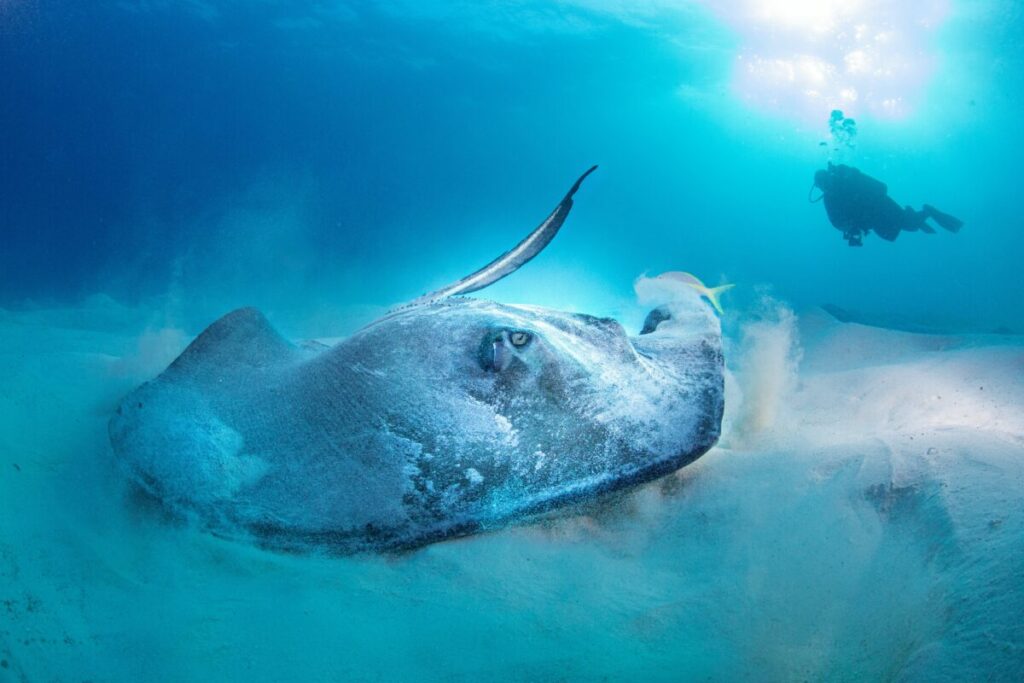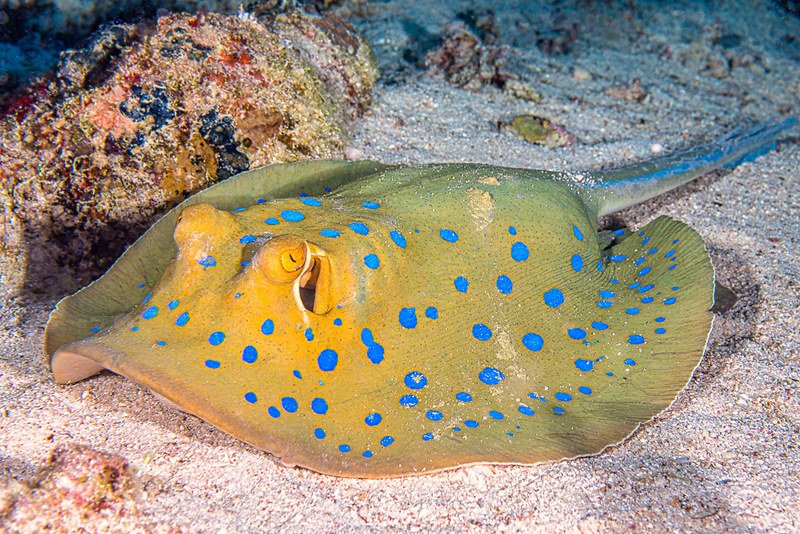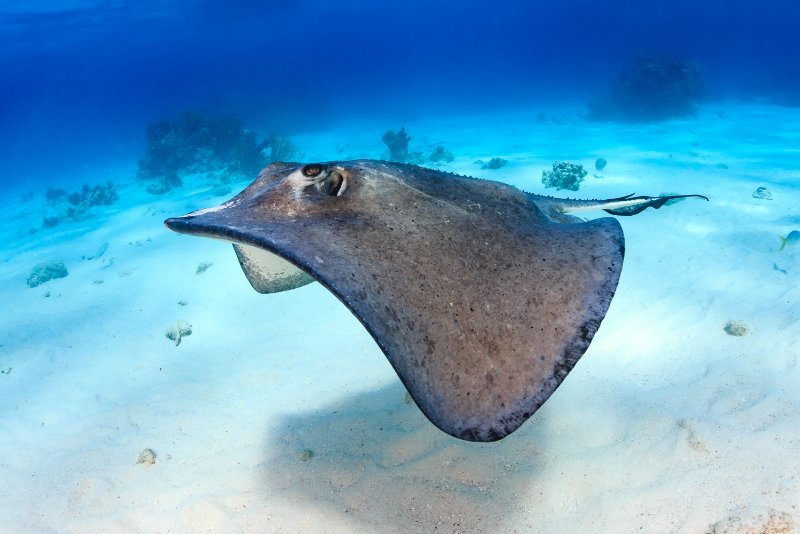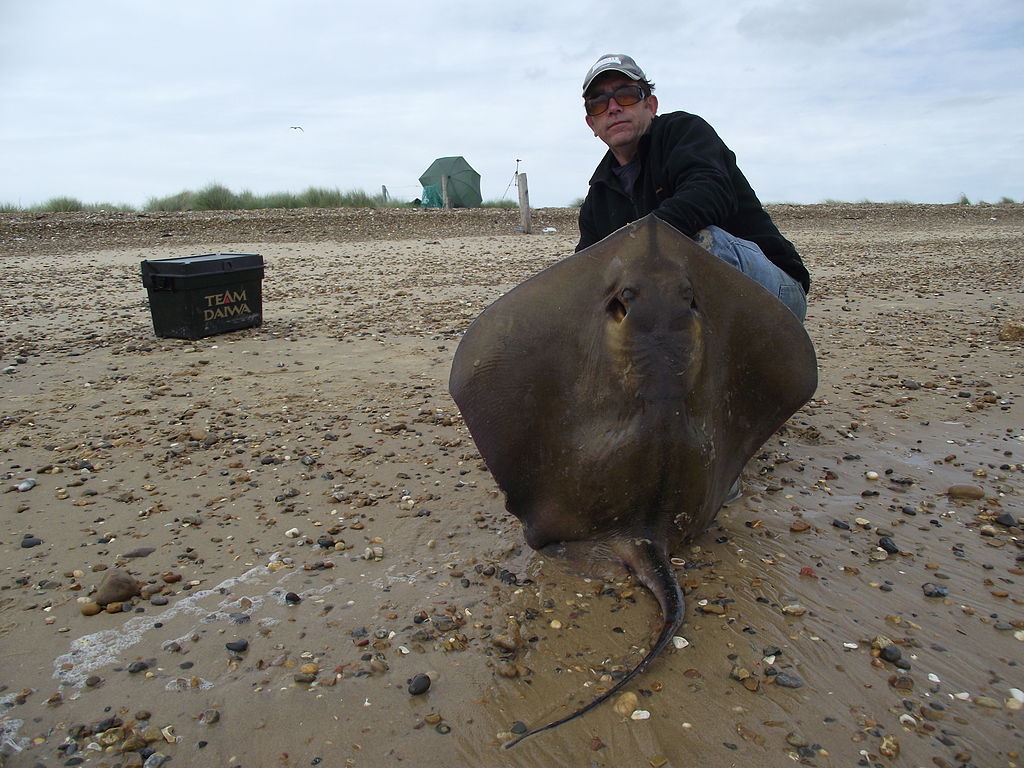If you’re keen on exploring the mysteries of the underwater world, the Blue Spotted Stingray, with iridescent spots and brilliant coloration, is likely to leave you spellbound. This dweller of the coral reefs is an attractive member of the marine world, carrying an intriguing mix of danger and beauty.
Habitat of The Blue Spotted Stingray

The vibrant Blue Spotted Stingray finds its home in the bottom sandy areas of coral reefs. The stunning beast frequents regions like the Red Sea, the Arabian Gulf, South East Africa, southern Japan, and northern Australia.
Their colorful spots and dark stripes are not merely a display of beauty but a signal of the venomous barbs tucked at the end of their tail, deterring any potential predators. Although they mainly reside in the depths, these stingrays move to shallower reefs during high tide, usually swimming alone or in small groups.
Main Traits and Behaviors

Their physical characteristics apart, they have a peculiar way of eating. They have a mouth on their underside and two crushing plates with which they break apart the shells of crustaceans, their prime diet.
The bright blue spots on a background of grayish or reddish-brown camouflage them well with the sandy ocean floor, while the white underbelly blends with the sunlight streaming through the water when seen from below. This is nature’s amazing adaptation for predator evasion.
Threats and Preservation

While one would expect them to abound given their wide habitat range, unfortunately, the Blue Spotted Stingrays are currently listed as a threatened species. The despoliation of coral reefs, chemical poisoning from farm run-offs, and the repercussions of commercial fishing practices have significantly influenced their population decline.
While they are not endangered, their exquisite coloration makes them a favorite for aquatic pet traders. However, precarious conditions in captivity and lack of space often mean that few live their full life potential.
Breeding in captivity has posed challenges as well. In the wild, the female emits specific pheromones to attract males. However, this process has been tough to replicate in captive conditions.
Did You Know?

- When Blue Spotted Stingrays are born, they have complete markings, matching their parents’.
- At birth, these creatures are self-reliant and fully venomized.
- The average litter typically consists of up to seven young ones.
Remember, the Blue Spotted Stingray justifies the saying “beauty can be dangerous.” Even if they may seem docile, they can retaliate with a venomous tail strike if they sense danger. Hence, it’s wise to appreciate these undersea beauties from a safe distance.
Lucky for you, they usually feed during the day, making them relatively easy to spot if you get the chance to dive in their habitat areas. These stunning creatures of the deep are truly a sight that will stun any ocean explorer!